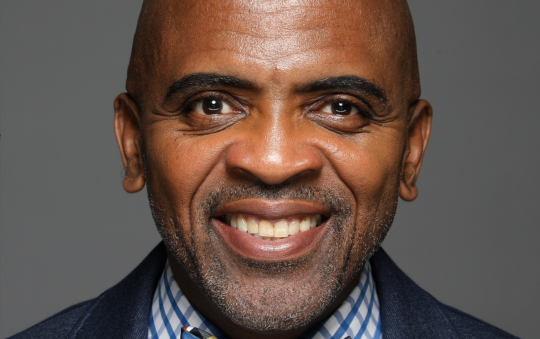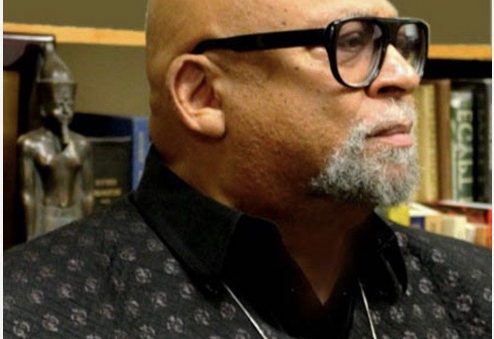
The racial, indeed racist character of American justice, how it is conceived, carried out and justified, cannot be sensibly, seriously or honestly denied. We, as a people have lived with and resisted this kind of justice, in reality injustice, for centuries. And thus, we know it not only from our own reading and reasoning, but also from our lived experience and daily lives, a brutal, bruising, terrorizing, freedom-denying, life-taking experience. So, the recent verdict justifying Kyle Rittenhouse’s shootings and killings in Kenosha does not surprise even the most optimistic among us.
Indeed, we know that when weighing the evidence, especially with Blacks, directly or indirectly involved, the racialized scale of American justice will tend to tip toward White interests in criminal and civil cases. And whereas we are always shocked and righteously outraged by radical evil and injustice anywhere and all the time, we cannot morally ever get used to this racist injustice, believe it is useless to resist it, or fail to honor the ancient African moral imperative “to bear witness to truth and set the scales of justice in their proper place among those who have no voice.” That is to say, the vulnerable, the silenced and suppressed, disempowered and the downtrodden, the devalued and the oppressed.
Kyle the kid, rode roughshod into Kenosha, shot and killed two men and wounded another, took the stand in his trial, cried on cue, was cuddled by the judge and the essentially White jury, who acquitted him under the guise of self-defense. A modern young cowboy with gun and gall, joining his right-wing vigilante compatriots in a save-White-America mission, he pretended and then retracted that he came to protect property. Indeed, he did not stand guard for any property, but threw himself in the midst of protestors, largely White and allied with Black Lives Matter, who were demonstrating against police violence, especially the police shooting of a Black man, Jacob Blake, seven times in the back and side. It is this aggressive intervention while brandishing his AR-15 style assault rifle that provoked reactions from some of the protestors, and which he used as an opportunity to wound and kill, and then called it self-defense.
Others writing about this have raised issues of guns, gun laws and use, self-defense laws and division of America. Conceding the complexity of the issue, we still maintain that without placing at the center the issue of Black people and how we are differentially and unjustly treated, these issues seem diversionary, excusatory, apologetic, and reflective of an inability to face the racial aspects of American justice and American society.
Yes, the two men killed and the one wounded were White, but they were allies and activists in support of BLM, protesting police violence. These people see such socially conscious and activist Whites as race traitors, deserving death. It recalls the killing of Whites during the civil rights phase of the Black Freedom Movement. Indeed, not only were there shootings, brutal beatings and killings in response to this multiracial activism by the wild locals, but also often members of the local law enforcement and the FBI aided in the crimes and cover-ups and the disinformation advanced to discredit the White activists. So, again, it is about Black people and how Whites should act toward them.
The trial was a reflection of White privilege and White power from beginning to end. But even before the trial at the site of the shootings and killing, armed Rittenhouse was given a pass by the police, a privilege or latitude no one seriously thinks would happen with Black youth. Indeed, they are regularly shot unarmed and in various places – in cars, homes, playgrounds and streets. And so, Rittenhouse goes to trial, but it’s not going to be a real rial. Of course, the trappings are there, the procedure and persons concerned. But justice will not be served in real and substantive ways. For there is clearly a difference between procedural justice, i.e., focusing on going through a process, even if it is flawed and unfair, and substantive justice focusing on fairness, context and rightful outcome as well as the procedures themselves.
Rittenhouse had three advocates: his two lawyers at his table and a third advocate on the bench, the judge, and an almost totally White jury with one person of color as member or alternate. He is in a state that’s favorable to him as both White and vigilante. White conservatives raised millions for his bail and defense and declared him a kind of “hero.” He thus comes to court without the rightful concerns and understandable apprehensions of Black people and other peoples of color. He is truly presumed innocent in age, intent and race, and has only to appeal to the “reasonable doubt” of fellow White folks to escape conviction. And their reasoning and doubt are not ours for several reasons.
The judge in the trial bent over backwards to give Rittenhouse openings and support. He would not let the prosecutors call the victims, “victims,” or mention that Rittenhouse was affiliated with the White supremacist group, The Proud Boys. Moreover, he let the court hear his phone ringing music, a tune played at Trump’s entrance in rallies. He made an anti-Asian remark and repeatedly belittled and reproached the prosecution, undermining the legitimacy of the case. In addition, he dropped the charge against Rittenhouse of being a minor in possession of a dangerous weapon. And he led clapping for a defense witness as a veteran just before he was to testify. This is not simply White privilege – latitude and advantage; it’s the exercise of White power. Indeed, it is a reflection of racism as turning White bias, preferences and will into public policy, the official interpretation and application of law, and socially sanctioned practice.
This judicial shared-screen charade with its solid wall of Whiteness offers us nothing new about White American justice. It only reaffirms and reenforces our lived experience and lessons from critical studies of race and racism. And the first of these is that law is a fundamental feature and foundation of White power and that it is the making, interpretation and enforcement of the law that reveals this law as the right and will of the ruling race/class raised to the level of sacred observance at the point of the gun – whether masked in court or unholstered in the street in official or vigilante forms.
Kyle the kid’s judicial exoneration is not simply a signal to vigilantes, but also to other Whites whose false fears, fantasies and conceptions of Black people make them feel they too must and can, with impunity, arm themselves and intervene violently anywhere to maintain the established racial order. For it will be seen as justifiable White self-defense through the racist and racist reasoning of judge and jury. This was also a message sent to White and other allies of Black struggles for racial justice. It says Whites compromise their White status if they join Blacks and have no claim to the protected, privileged and powerful status their race gives them. And, of course, it is a tired terrorizing message to us, that if they do this to “compromised Whites,” we know we have no chance for protection or justice, indeed less than before.
But ours is a long, difficult, dangerous, deadly and demanding struggle. And we are not deterred by racist savagery in its various forms. Otherwise, there would have been no revolts and resistance in the Holocaust of enslavement and during the pervasive violence of segregation; and no defiant and determined struggle for freedom, justice, equality and power during the Black Freedom Movement or liberation initiatives now. We know the fierce and pallid face of terrorism and the confessed and camouflaged identity of the terrorists and we are not afraid of the self-inflated winter wolf of oppression. We will, as always, win by fighting, free ourselves and be ourselves through righteous and relentless resistance, and come into the fullness of ourselves in the continuous, courageous and uncompromising struggle for ongoing African and human good and the sustained well-being of the world.
Dr. Maulana Karenga, Professor and Chair of Africana Studies, California State University-Long Beach; Executive Director, African American Cultural Center (Us); Creator of Kwanzaa; and author of Kwanzaa: A Celebration of Family, Community and Culture, The Message and Meaning of Kwanzaa: Bringing Good Into the World and Essays on Struggle: Position and Analysis, www.AfricanAmericanCulturalCenter-LA.org; www.OfficialKwanzaaWebsite.org; www.MaulanaKarenga.org.






